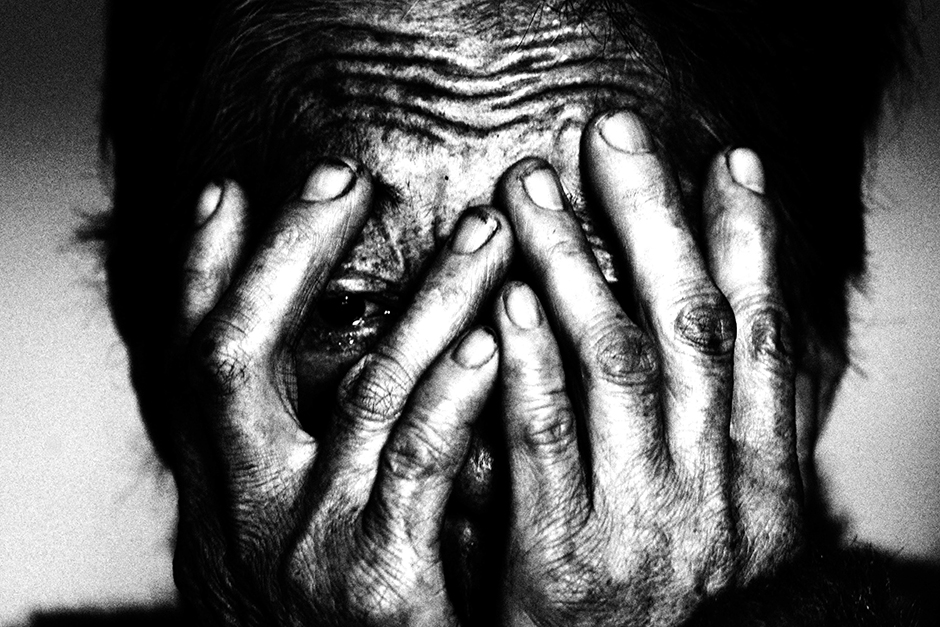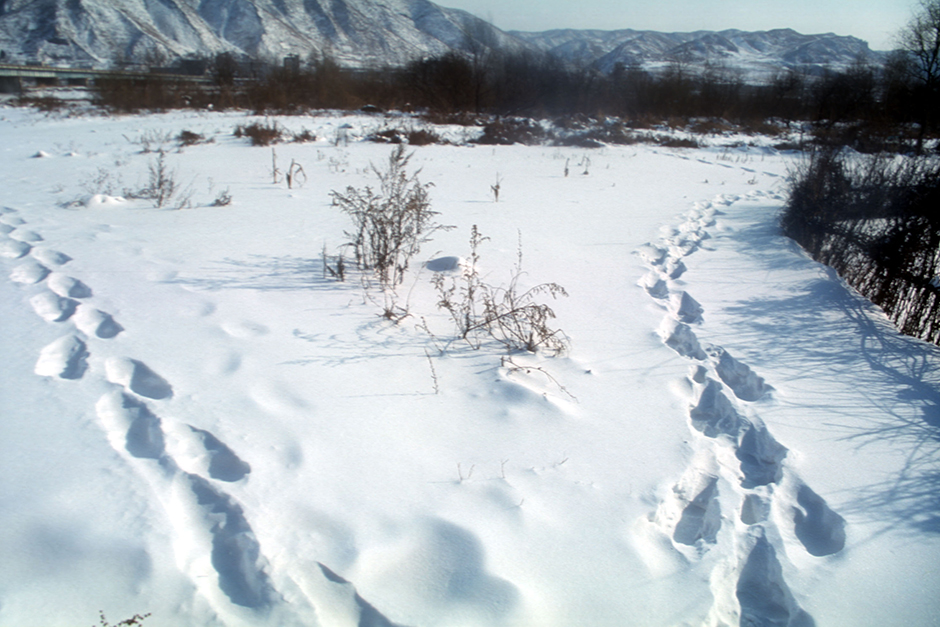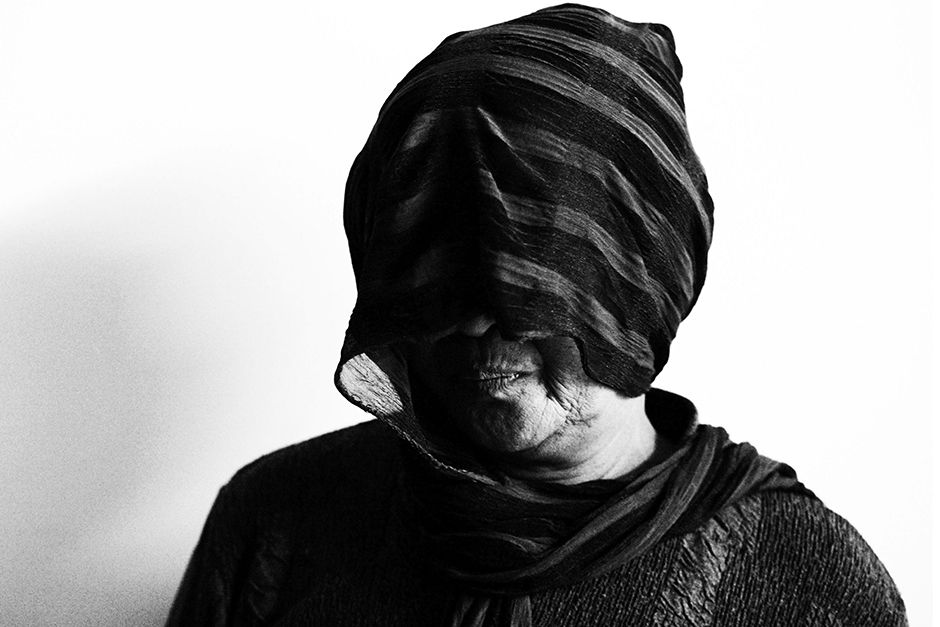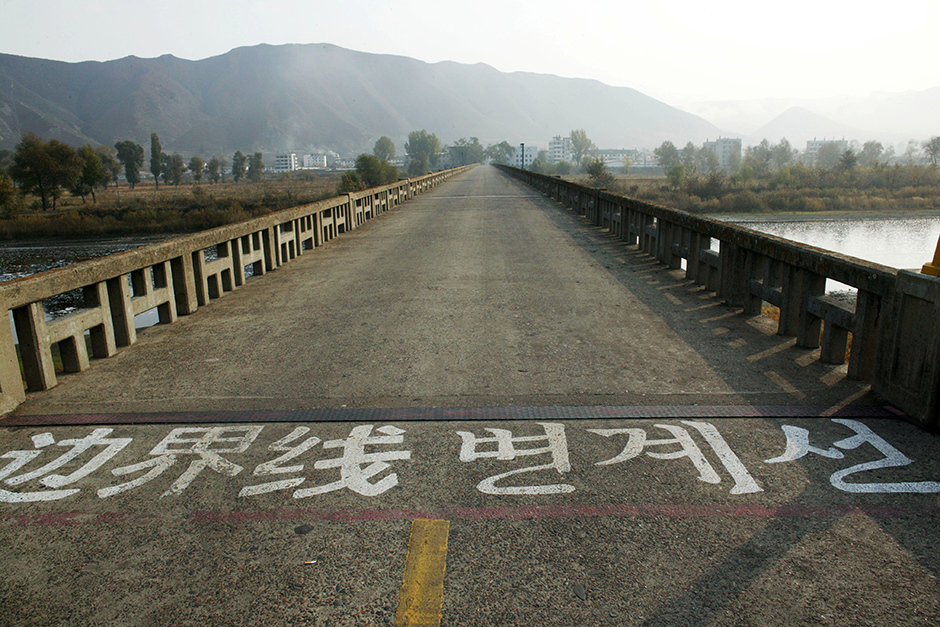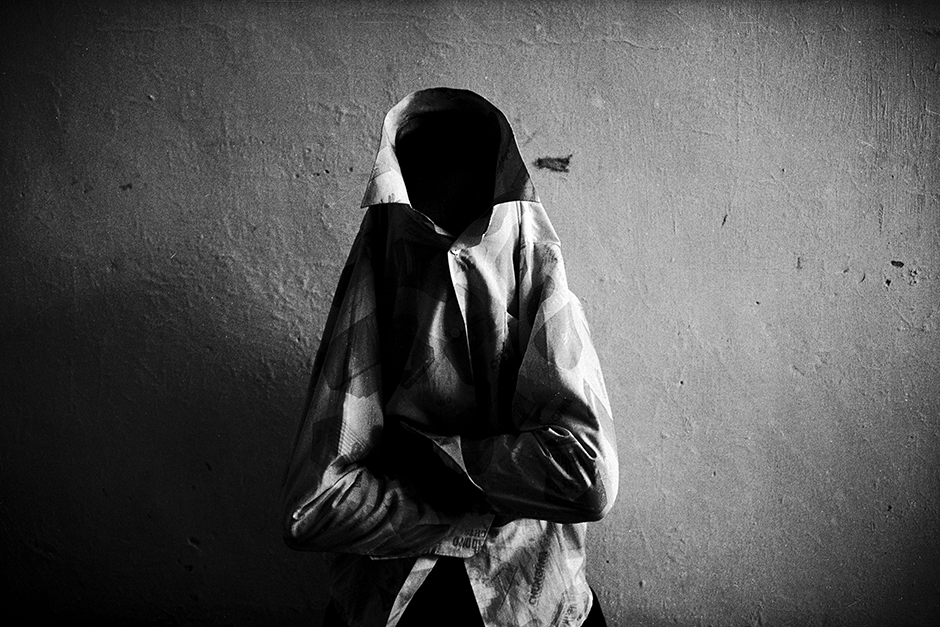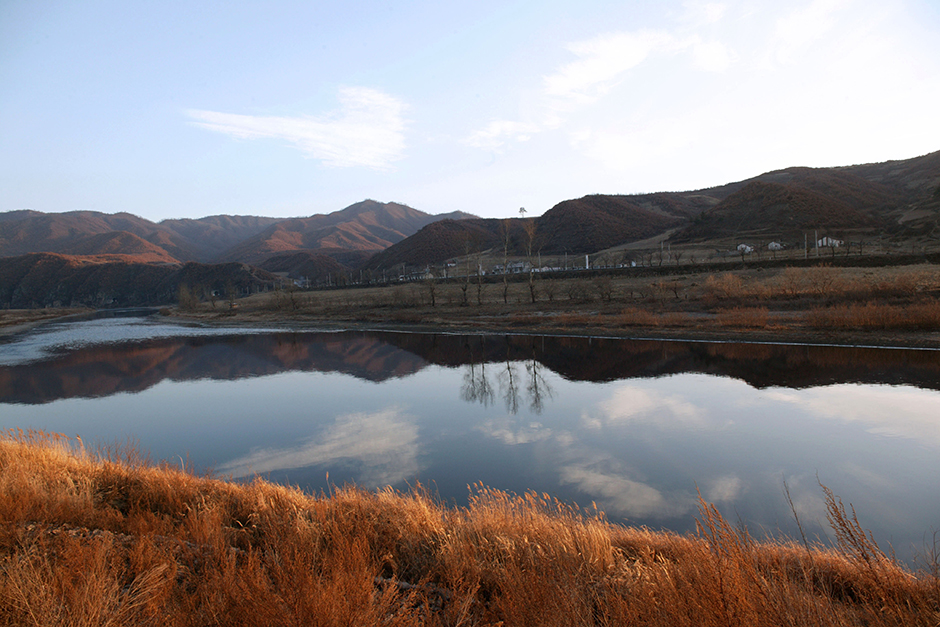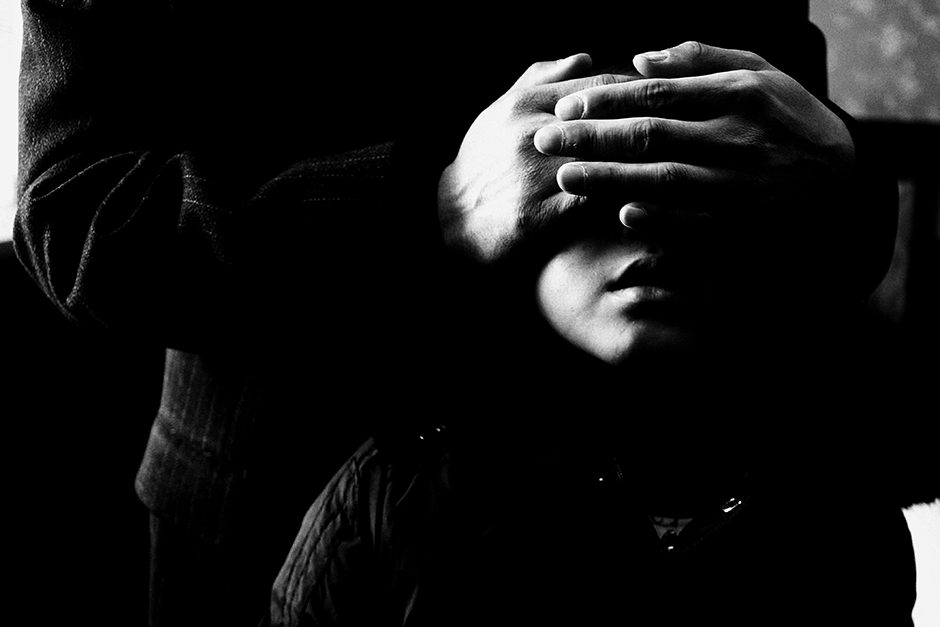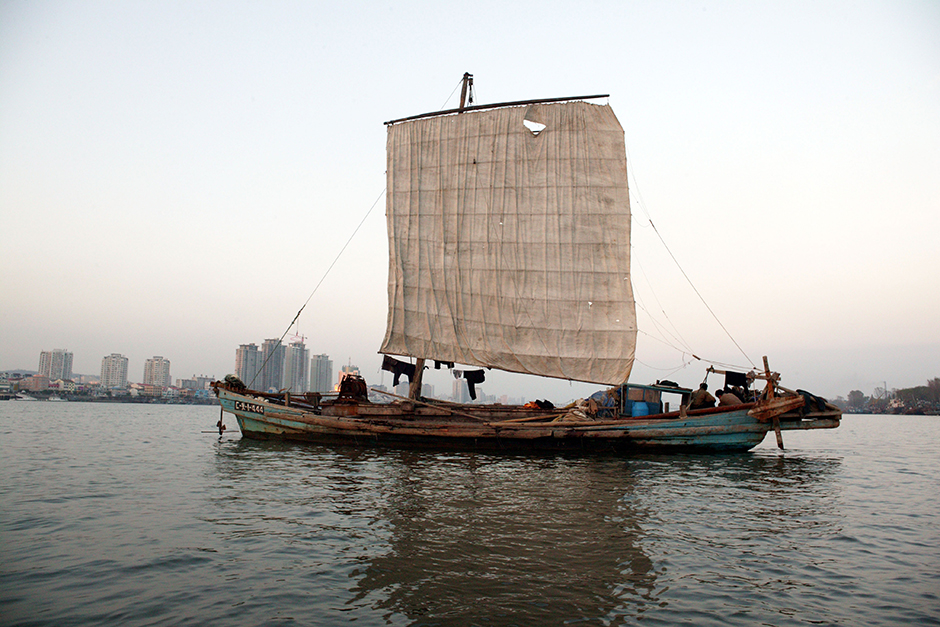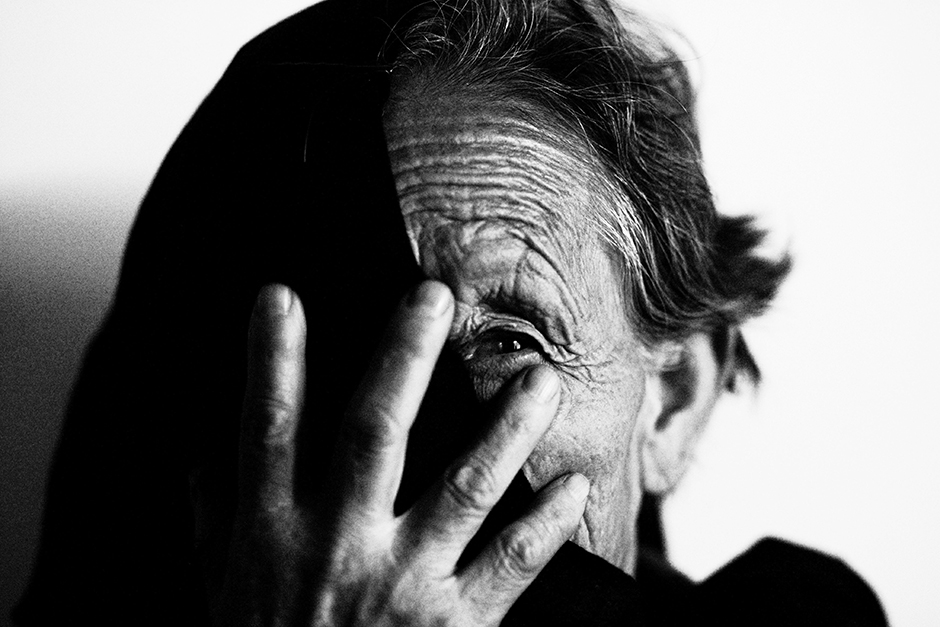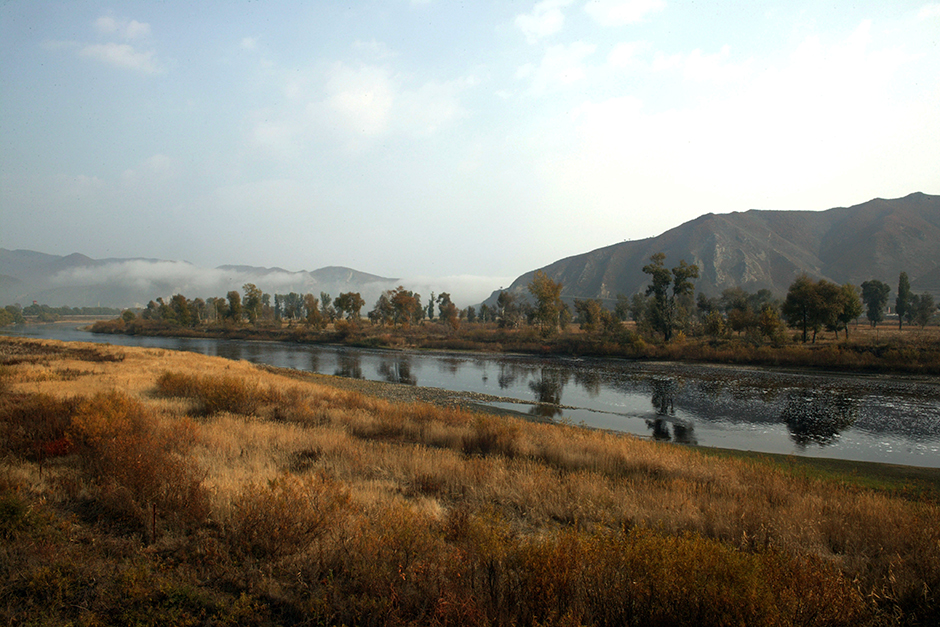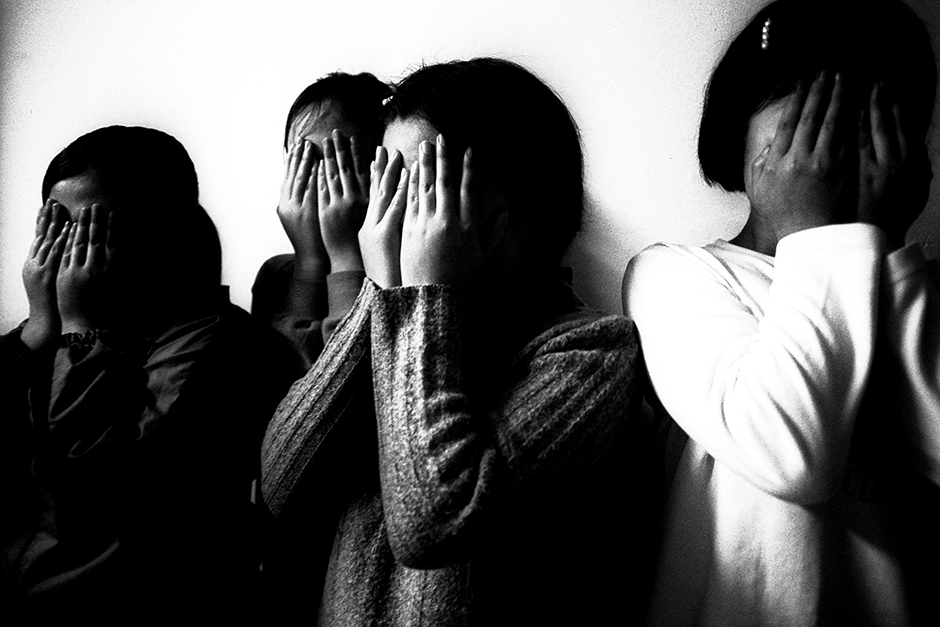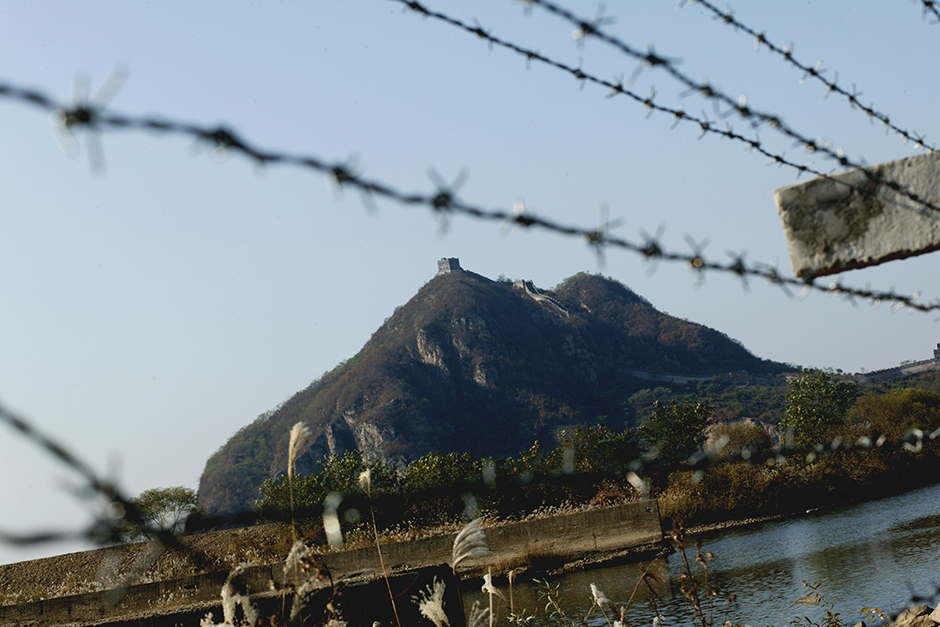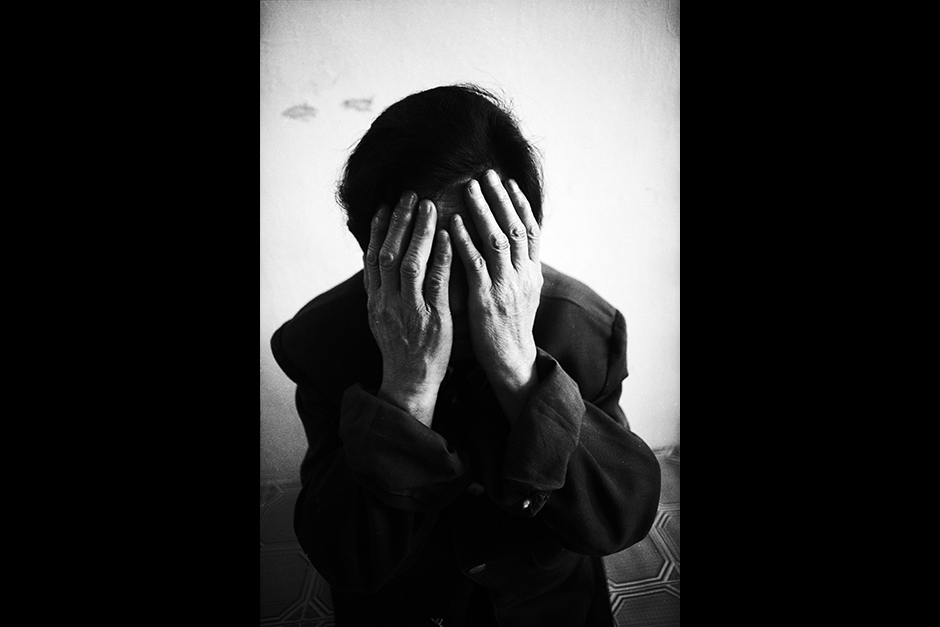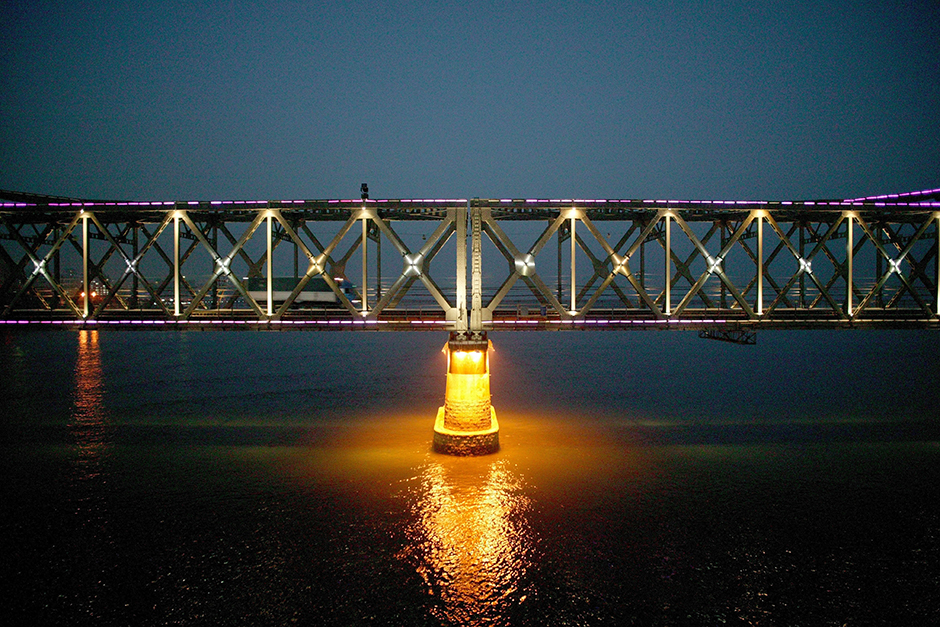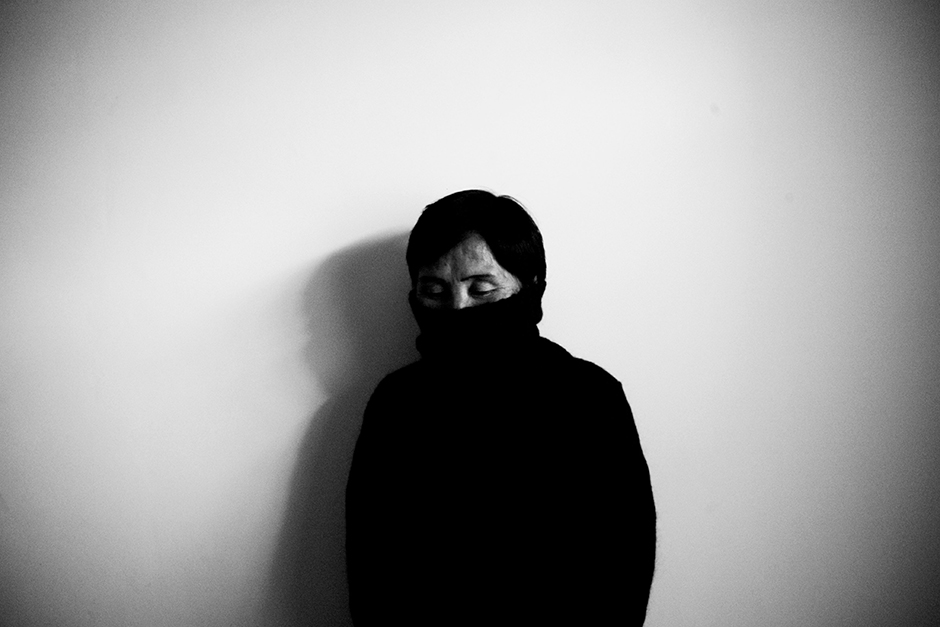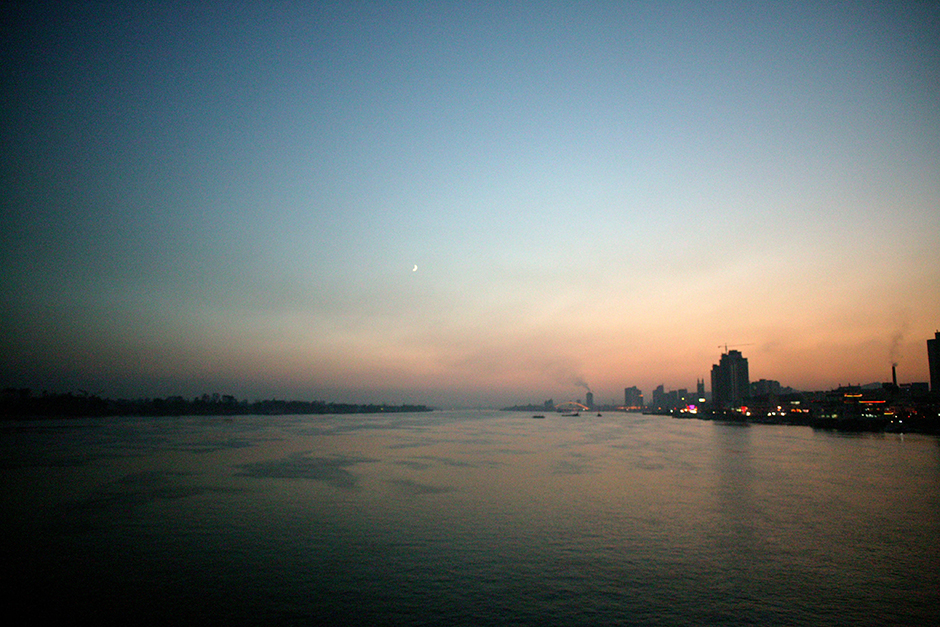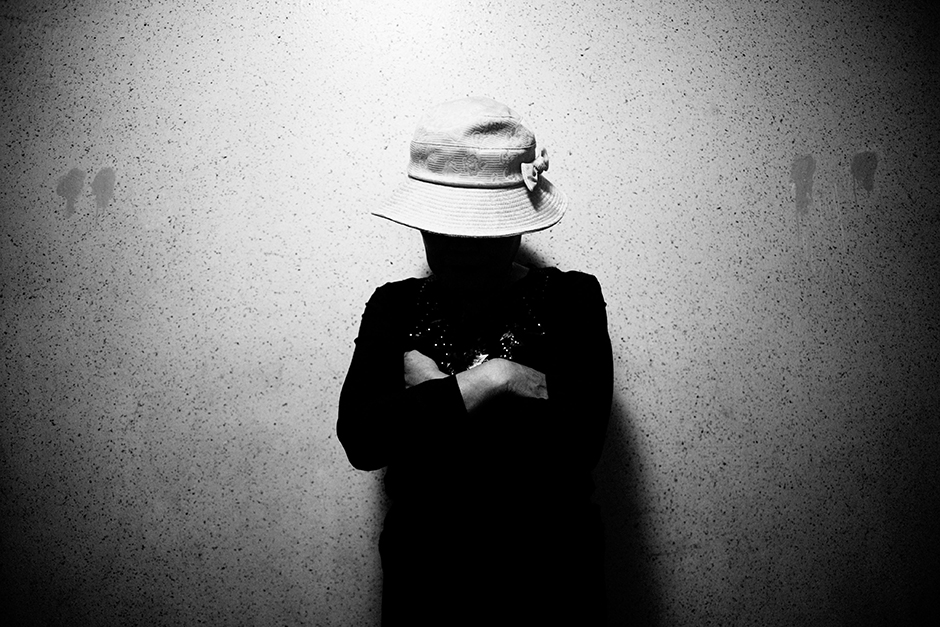Borderland
North Korean Defectors Hide in Plain View
Nine years ago, photographer Katharina Hesse began to make portraits of North Korean defectors. To protect their identities, she allows them to conceal their faces, asking only that they “give something” of themselves to the photographs. And they do. Her subjects bury their faces in their hands, or tuck them beneath the collar of a shirt, but even so, they work with Hesse to make themselves seen.
Postcard
08.08.13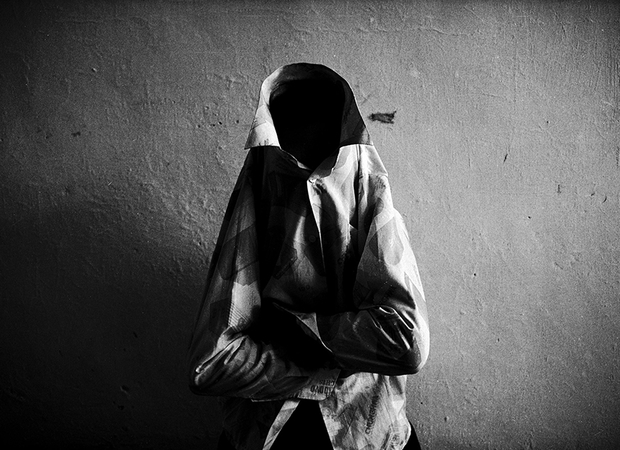
Portraits of the Faceless
Hesse pairs the portraits with images of the exposed, open terrain the defectors must traverse to cross the border into China and of the brightly lit bridges over the Yalu River that will carry them straight back to North Korea if they are caught. The landscapes work together with the portraits to build a sense of how difficult it must be for Hesse’s subjects to remain undetected, and of the terror they must feel at being forced to hide in plain view.




